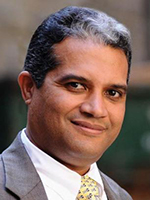Launched in 1997 by Dr. Simaan AbouRizk, the Forum established an important venue for circulating ideas, practices, and solutions among researchers and students, our partners, and members of the construction industry. Under the leadership of the CIC, the FORUM will continue to provide a platform to forge vital connections to the needs of construction professionals and deliver proven tools and techniques for improving and advancing construction.
Established in 2019, the Construction Innovation Centre (CIC) at the University of Alberta’s Faculty of Engineering is the center of construction research expertise, creating high-impact solutions and educating the next generation of innovative construction engineers. They are home to
- The Hole School of Construction Engineering
- The Nasseri School of Building Science and Engineering
- Masonry Engineering Research Group
- Steel Structures Research Group
To view and print the full Best Practices Program click here!
ICF 2021 Program Track Presentations

The Construction Innovation Centre (CIC): Research Driving Change
Dr. Aminah Robinson Fayek, Director of CIC, Professor, University of Alberta
Mr. Travis Chorney, Chair of CIC Executive Management Committee; Senior Vice President, PCL Industrial Management Inc.
The Construction Innovation Centre (CIC) was established in 2019 by the University of Alberta’s Faculty of Engineering to provide a competitive advantage for the Canadian construction industry by conducting breakthrough research, education, and training. The CIC provides unparalleled opportunities for collaborative and multidisciplinary research by facilitating alliances between academic institutions, industry partners, professional associations, government agencies, and funding bodies.
Join CIC Director Dr. Aminah Robinson Fayek and Mr. Travis Chorney, Chair of the CIC’s Executive Management Committee, to learn about the CIC’s innovative research roadmap and strategic business plan, collaboration with industry partners, exciting research initiatives, and what’s ahead for the CIC.

Revitalizing the Engineering Science of Masonry, Brick by Brick: Development of Enhanced Systems for Sustainable Masonry Infrastructure
Dr. Carlos Cruz-Noguez, MCAA Endowed Chair in Masonry Systems, Associate Professor, University of Alberta
Dr. Mark Hagel, Director of Engineering, Alberta Masonry Council
The MCAA Masonry Chair in Masonry Systems at the University of Alberta seeks to develop innovative masonry systems and design techniques, study the unexploited capabilities of modern and traditional masonry, and investigate the safety and durability of masonry structures by working closely with contractors, architects, engineers, building officials, suppliers, block manufacturers, and scientific/technical organizations dedicated to the advancement of masonry research, development, marketing, and innovation. Masonry is a centuries-old construction material with a proven record of strength and energy efficiency. With its high thermal efficiency and inherent durability and the advent of newer, more stringent energy codes that favour performance-based design, masonry construction is a cost-effective option to meet the energy efficiency needs of new Canadian infrastructure.
However, perhaps due to the fact that many engineers and construction practitioners view masonry as an “old-fashioned” or “hand-crafted” material, masonry technology has failed to capitalize on the significant innovations in material science, computer simulation, and construction technology that have occurred in recent decades. As a result, the potential benefits that masonry could bring to Canadian society in terms of durability, thermal efficiency, and strength-to-cost ratio remain underutilized.
Join Dr. Carlos Cruz-Noguez, MCAA Endowed Chair of Masonry Structures. at the University of Alberta, and Dr. Mark Hagel, Engineering Director of the Alberta Masonry Council, for a discussion of the challenges and opportunities facing the development of new and enhanced systems to control the movement of heat and moisture through masonry structures.

Harnessing Data to Drive Safety Performance
Dr. Lianne Lefsrud, Assistant Professor, Lynch School of Engineering Safety and Risk Management, University of Alberta
Jim Kanerva, General Manager, Carry Steel
The lack of integrated safety management data in construction organizations leads to an inability to identify the factors that drive safety performance, a focus on lagging indicators like Total Reportable Incident Rate, and a limited ability to evaluate multiple performance metrics simultaneously and identify their interrelationships.
Join Dr. Lianne Lefsrud, Assistant Professor with the Lynch School of Engineering Safety and Risk Management at the University of Alberta and Jim Kanerva, CW Carry Steel for a presentation on a project that seeks to develop an integrated data-driven framework for safety planning and management and improved decision support to increase the safety performance of construction projects. Attendees will gain insight on how information from a wide variety of sources can be integrated to return estimates and predictions for safety performance measures that can assist project managers to take measures to reduce risk and enhance productivity.

The Advantages of Robotics in Construction
Dr. Ying Hei Chui, Professor, Director, Nasseri School of Engineering and Building Science, University of Alberta
Dr. Jesse Kang, Professor, Civil & Environmental Engineering, University of Alberta
Mr. Reza Nasseri, CEO, Landmark Group

TBA
Dr. Fenioski A. Peña-Mora, Columbia University New York City
Edwin Howard Armstrong Professor of Civil Engineering and Engineering Mechanics, Professor of Earth and Environmental Engineering, Professor Computer Science, Columbia University in the City of New York

The Resilience of Cities
Dr. Ursula Eicker, Canada Excellence Research Chair, Next Generation Cities Institute, Concordia University
Cities are complex adaptive systems that can prepare to react well to hazards and stresses from natural or human made disasters such as earth quakes, pandemics, terrorist attacks or climate change related droughts, flooding or heat waves.
Floods endanger more city residents than any other natural hazard, followed by earthquakes and storms, and the likelihood of floods is increasing due to climate change. As there will be limits to adaptation, it is essential to combine adaptation with mitigation strategies to tackle the real causes of the problem, i.e. the unsustainability of our built environment. Climate-resilient pathways include strategies, choices, and actions that reduce climate change and its impacts as well as effective risk management. The goal is to enhance positive feedbacks between mitigation, adaptation, and sustainable development while minimizing potential trade-offs between them.
Urban resilience frameworks allow to assess the status of a city in four core dimensions of effective leadership and empowered stakeholders, health and well-being, sustainable economy and urban Infrastructure for critical services, reliable mobility and communication.
The health of the city dwellers is a major factor for resilience, especially when faced with pandemics. And health is not just a function of a good public health system, but depends on many factors such as social cohesion or the population´s activity level and access to green spaces and parks. Active transportation has been pushed forwards by many cities in the pandemic by rapidly increasing bike lanes or by converting streets to pedestrian zones.
Sustainable, resilient and inclusive cities are often the outcome of good governance that encompasses effective leadership, inclusive citizen participation and efficient financing among other things. To this end, public officials increasingly have access to public data, enabling evidence-based decision making. Open data is also increasingly transforming the way local governments share information with citizens, deliver services and monitor performance. It enables simultaneously increased public access to information and more direct citizen involvement in decision-making.
The growing accessibility and use of urban digital twins offer new ways of combining urban scale data with scenario modeling to assess and plan the transformation of the built environment, the urban infrastructure and the transportation system towards a decarbonized, sustainable and resilient next generation city.
